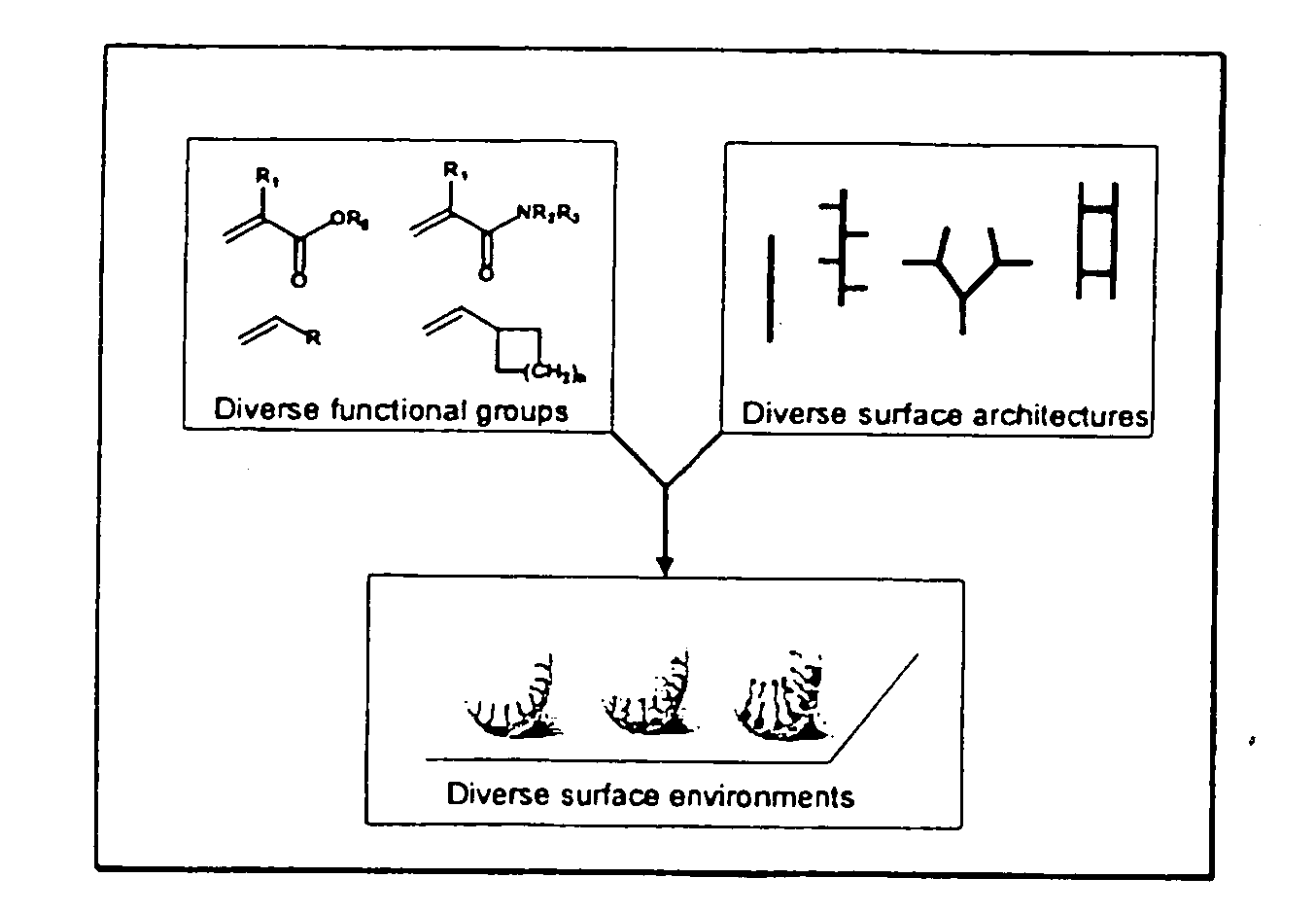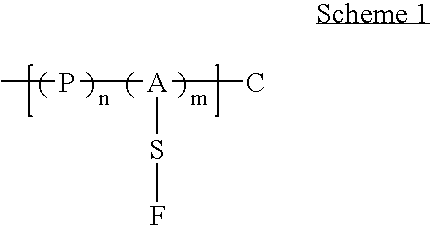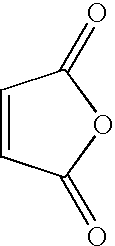Generation of surface coating diversity
a surface coating and diversity technology, applied in the field of surface coating technology, can solve the problems of lack of established surfaces, limited number of established surfaces of current surface coating technology, and bottlenecks of different surface coatings, and achieve the effect of generating surface diversity and avoiding bottlenecks
- Summary
- Abstract
- Description
- Claims
- Application Information
AI Technical Summary
Benefits of technology
Problems solved by technology
Method used
Image
Examples
examples
[0108] 1. Generation of a Maleic Anhydride (MAn)-Styrene Backbone Coating on a Polymeric Solid Substrate.
[0109] Scheme 8, above, illustrates the reaction carried out in generating the backbone coating. Plastic hollow cylinders, measuring 6mm in length, 3 mm in diameter were pre-radiated in air at room temperature (1.8 KGy / h for 7 hours). A 40% (v / v) solution of styrene and maleic anhydride, present in mole equivalent proportions, in toluene was prepared and the added to the irradiated plastic cylinders. The mixture was then purge with nitrogen gas for 5 minutes via a septum and heated, with agitation at 60° C. for 6 hours. The plastic cylinders were then isolated from the polymerised solution, washed thoroughly to remove non-grafted polymer and dried to constant weight.
[0110] 2. Attachment and Subsequent Deprotection of Tert-Butyl Carbamate (BOC) Protected Diamines Spacer Units to MAn-Sty Backbone Coating.
[0111] Step 1: Ring Opening with Amines (see Scheme 9, below)
[0112] A 1:...
PUM
| Property | Measurement | Unit |
|---|---|---|
| diameter×0 | aaaaa | aaaaa |
| temperature | aaaaa | aaaaa |
| wt % | aaaaa | aaaaa |
Abstract
Description
Claims
Application Information
 Login to View More
Login to View More - R&D
- Intellectual Property
- Life Sciences
- Materials
- Tech Scout
- Unparalleled Data Quality
- Higher Quality Content
- 60% Fewer Hallucinations
Browse by: Latest US Patents, China's latest patents, Technical Efficacy Thesaurus, Application Domain, Technology Topic, Popular Technical Reports.
© 2025 PatSnap. All rights reserved.Legal|Privacy policy|Modern Slavery Act Transparency Statement|Sitemap|About US| Contact US: help@patsnap.com



